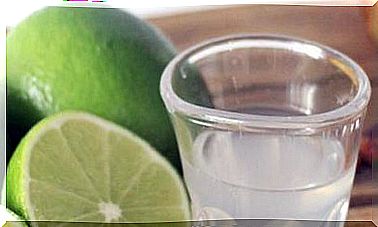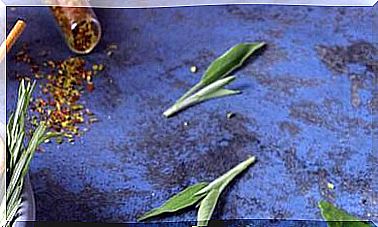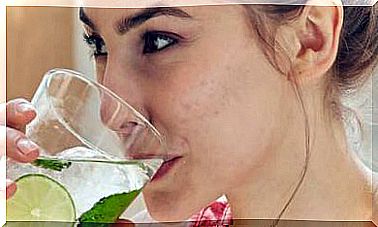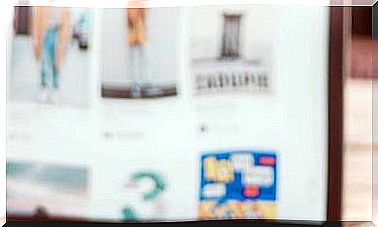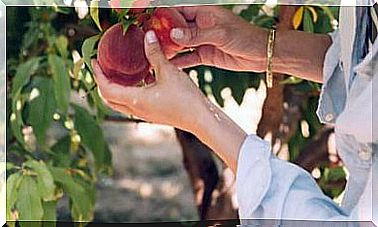Join The ‘Zero Waste’ Plan With These 9 Strategies
We propose a challenge: to see who reduces, reuses, recycles and rejects more packaging, plastics and useless objects. Goodbye mountains of garbage!
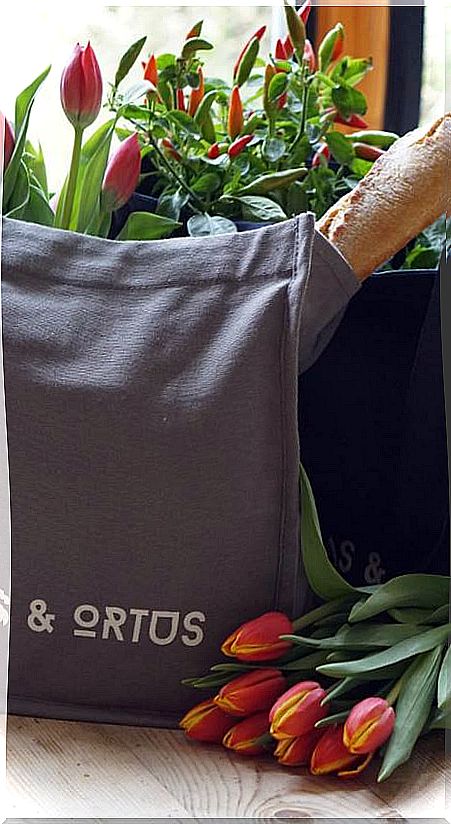
Experts warn us that in 2050 there will be more plastic than fish in the seas and that this threat has already reached our tables in the form of salt and water with traces of microplastics.
Julio Barea, from Greenpeace, recalls that 82.6% of the waste we generate is mixed and, therefore, pollutes the environment. Only 17.4% are waste from separate collection. Also, recycling is not the solution, but the last resort.
The four R’s: reduce, repair, reuse and recycle
From this need to eliminate waste, movements such as Zero Waste have been born , which promote changing the habit of using and throwing away to drastically reduce the generation of waste.
Starting a “zero waste” life in a hyper-consumer world is not easy, but it sends a powerful message to industries in all sectors: “We are not going to buy products whose packaging destroys the health of the living beings that inhabit the Earth.”
To make this transition, Ally Vispo, a committed vegan blogger and zerowaster, has written Simply Mindful (Ed. Fenland House Publishing) with ideas for change from a vegan perspective.
These are some proposals, but the limit will be your own imagination.
1. Recycling, the last resort
In Spain, each person generates 440 kilos of garbage a year. No matter how well we separate garbage, recycling consumes a lot of energy and wastes resources. And burn this premise to yourself: most of the materials we throw away cannot be recycled indefinitely:
- Paper and cardboard can come back to life between 3.5 and 6 times.
- Plastics give themselves for 4 or 5 recycling cycles, but some are not suitable for the process. For example, PVC participates in a small amount in many packaging and contaminates the recycling of other plastics. On the other hand, not all plastic is recycled because it is not always economical to do so: colored plastic is less desirable because the tone cannot be removed and that restricts its reuse.
- The glass, separated by color, is recycled over and over again without the material degrading.
- Metals can be used again without losing properties.
In case you cannot find an alternative without packaging for the products you need, choose glass or aluminum containers (it can be practically 100% recycled and uses less energy than when producing it new).
If it is essential to buy something with plastic, look for the symbol of “recyclable”: a triangle formed by three arrows, the only one that identifies it.
Totally discard the finest plastic bags (less than 50 microns). They no longer give them away, but they continue to be bought for a few cents. Their damage is tremendous: they jam the recycling machinery and easily fly out of the plant, becoming a threat to birds and fish.
2. Do not throw anything, repair
Learn to do small repairs (you can do workshops or meet people who can teach you in the Repair Cafes, for example).
3. Basic kit to leave home
Start by always carrying with you when you leave home:
- Cloth bags.
- Reusable glass or stainless steel bottle (there are also double-walled thermals).
- Stainless steel, glass, bamboo or wheat fiber mug for coffee or infusions.
- Bamboo or stainless steel cutlery set for eating out (bamboo weighs less).
- Forget cardboard coffee cups : they are waterproofed with plastic and cannot be recycled at all plants.
4. When making the purchase
First, analyze your eating patterns. For example: do you usually consume 4 or 6 bananas a week? If you usually eat 4, but buy 6 because they are on sale, it is very possible that those extra two end up in the trash.
The planning and knowing these patterns are key. Share an online shopping list with your family so you don’t make duplicate purchases.
Whenever possible, buy in bulk, without packaging. In a big city you have a good chance of finding a store nearby. And maybe walking a little further you get more specific bulk ingredients, like nutritional yeast or tahini.
If you can’t find them, buy containers that are as large as possible. To manufacture a larger one, fewer resources are spent than for several small ones.
Always carry baskets and cloth bags. It is an obvious advice, but also extend it to the purchase of pieces of fruit and vegetables using reusable bags.
- The mesh bags, for large pieces.
- The bags of cotton or muslin thick, very light, are a good choice because they also serve to grains, seeds, nuts and spices.
- Some wider bags for lettuce.
- Other longer bags for leeks, carrots with leaves …
You find them on the internet and they are very resistant. With an old shirt sleeve you can make a bread bag. Glass jars and tins are also good for seeds or spices if the store scale discounts their weight.
5. Take advantage of everything in the kitchen
Some ideas that Ally Vispo contributes so that there are almost no leftovers in the kitchen:
- With the tips of carrots, garlic, leeks, onion peels and discarded leaves of lettuce or cabbage, make a broth simmered for 45 minutes.
- With the leftover pulp of the vegetables when you prepare a juice, make vegetable burgers adding crushed legumes, spices and rice flour to coat.
- With the pulp of the nuts, after making non-dairy milk, make cookies by adding ground oats, mashed banana and spices.
- With okara (soy pulp) you can prepare vegan meatballs.
Buy almonds, cashews, oats and other cereals, nuts and seeds in bulk or in large quantities online if there is no store nearby (ask if they can send it to you in cardboard packaging) and make your own vegetable products : milk, yogurt , cheeses and butters.
You can use Mason jars as containers (they are made of glass and have a screw cap), glass containers and bottles, adjustable silicone lids and accumulative metal lunch boxes.
- Use wooden or bamboo cutting boards.
- Stainless steel vegetable pots, graters and peelers.
- Bamboo baskets for steaming.
- Silicone bags for freezing or storing food.
- Instead of jars or bags of aromatic plants, buy live plants or plant them in compostable pots.
- Eliminate polyester or polyamide scourers forever (green and yellow, so common in all homes). Replace them with 100% vegetable and compostable loofah or jute scourers. The only downside is remembering to hang them to dry and not mold. Searching the internet you also find them made of cotton with a triple flannel core and a burlap face, more effective with dirt.
- Make your own “no paper” kitchen roll. Keep lots of scraps of cloth and kitchen towels piled up so you don’t miss the kitchen paper when drying pans or when a liquid spills. If you are a handyman, make your own reusable kitchen roll out of cloth and old cotton towels (with a curl side, which absorbs more). Sew around velcro or clasps and roll into a roll just as blogger and seamstress Sabra Gubler suggests.
- It seems essential to replace the plastic film, but it is not at all. Replace it with fabrics treated with vegetable wax and tree resins, which conform to the desired shape and when damaged are compostable.
- Use silicone lids or plates to cover the food bowls that you keep in the fridge.
- With Chemex coffee makers you save packaging and electricity. The plunger ones do not even need a paper filter.
6. House cleaning
Ally Vispo’s suggested “anti-use-and-throw away” home cleaning kit consists of:
- Vegetable fiber brooms with wooden sticks.
- Stainless steel or zinc-plated iron shovels and buckets.
- Mops with wooden sticks and braided strips of old T-shirts.
- Cotton mop (a crochet cover can be made).
- Wooden brushes with cactus bristles for washing dishes.
- Bagless vacuum cleaners.
- Rags made from old clothes.
There are already many stores that sell the most basic detergents (multipurpose, dish soap, for toilet, for clothes or for floors) in bulk and ecological.
You can make them yourself with harmless formulas. On the internet you find many recipes that use only baking soda, lemon, vinegar, hydrogen peroxide and essential oils.
- The white vinegar distillate used to clean surfaces. Eco floor scrubber (3/4 parts of water mixed with 1/4 of distilled white vinegar).
- The baking oven cleaner or disinfect the toilet.
- The vodka for windowpanes or deodorize shoes (vaporizing inside).
- The soap nuts (of the tree Sapindus mukorossi , originally from India and Nepal) for laundry. 4-6 are enough for a 5 kg washing machine.
- Another product is Terra Wash, which contains purified magnesium and is sold in sachets that last up to a year.
- And with Marseille soap (400 g), sodium carbonate (180 g), bicarbonate (180 g) and essential oils you can make your detergent.
7. Hygiene and cosmetics
Many hygiene products that you could not imagine incorporate plastic microspheres that reach the sea and poison wildlife: toothpaste, scrubs and some bath gels and detergents. Avoid products with hidden plastic.
The shampoo, is it necessary? The No Poo (“no shampoo”) movement invites you to experience effective homemade formulas for your hair that you can make yourself to avoid plastic packaging: baking soda (weak base) with apple cider vinegar (weak acid) to remove dirt.
The Lush brand markets solid, unwrapped shampoos. You just have to buy a can initially and then take it with you to refill your shampoo.
Solid soap lasts much longer than liquid soap and can be found in bulk, at street markets, wrapped only in paper, or in cans. In the worst case, if the product you need comes in plastic jars, buy a 1-liter bottle better than several 250 ml ones.
Basic bathroom set:
- Bamboo spike combs.
- Vegetable bristle bamboo toothbrushes (beware, some use animal bristles).
- Steel razors with replacement blades.
- Bamboo ear buds (“oriculi” type).
- Solid toothpaste in a can.
It takes 500 years for pads to disappear from landfills. Replace them with:
- Reusable cotton pads and panty liners.
- Menstrual panties.
- Menstrual cups. They are very comfortable, they are cleaned with soap and water, they are sterilized once a month, they cost only about € 20 and last up to 10 years.
8. Durable clothing
Fashion is responsible for 10% of all CO2 emissions. In Spain 325,000 tons of clothes are thrown a year. Extending its useful life two years reduces emissions by 24%, according to Greenpeace. Therefore , learn how to fix your clothes or take them to a seamstress to transform them.
Use peer-to-peer apps like Wallapop. Ally Vispo recommends online markets such as Chicfy, Vestiaire Collective (for fans of the brands) or Depop. And do not rule out exchanging clothes with friends to enjoy the news.
9. Celebrations
Try to give useful gifts. Choose experiences, learn about what you need your friend to not give away useless things, search for items unique in thrift stores, make it something craftsman (a cake or soap) or decántate a digital gift (a book or MP3 music).
You can wrap them in redecorated shoe, cereal or cookie boxes. And discover the Furoshiki: a square, reusable fabric that is knotted in a thousand ways.
At a celebration, a zerowaster has a lot to say. For example, at a wedding, instead of throwing rice at the bride and groom, throw birdseed (which the birds will eat), as Ally Vispo suggests, or make confetti out of dried tree leaves and a hole punch.
